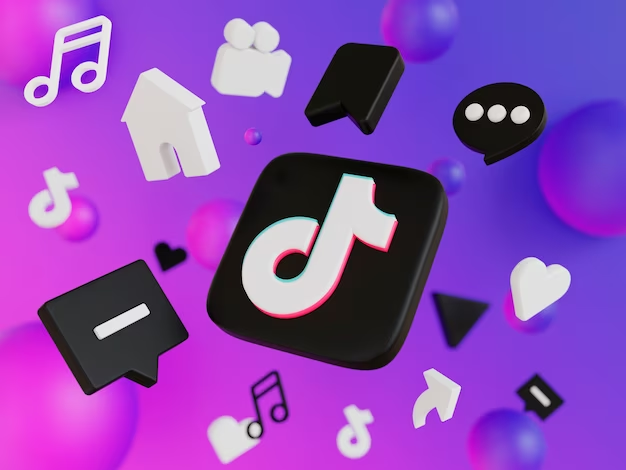TikTok has become a global phenomenon, with millions of users around the world spending an average of 52 minutes per day on the platform. This social media app allows users to create and share short videos, showcasing their creativity and capturing the attention of audiences. With such a large and engaged user base, TikTok has become an important platform for businesses to connect with their target audience. But how can businesses effectively leverage TikTok for social listening? In this complete guide, we will explore the concept of social listening on TikTok, its importance, and how businesses can create a successful social listening strategy on this platform.
What is social listening on TikTok?

Social listening refers to the process of monitoring and analyzing conversations happening on various social media platforms, including TikTok. It involves tracking mentions, comments, and trends related to your brand or industry to gain valuable insights. By actively listening to what users are saying about your brand or industry on TikTok, you can identify opportunities, gather feedback, and make data-driven decisions.
On TikTok, social listening involves monitoring not only direct mentions of your brand but also discussions related to your industry or products/services. By keeping an ear to the ground and understanding what users are saying about these topics on TikTok, you can uncover valuable insights that can inform your marketing strategies.
5 reasons why social listening is important on TikTok
TikTok is a potent tool for social listening and customer analysis. Here are some key reasons why social listening matters on TikTok:
1. Understanding customer sentiment
By monitoring social listening conversations about your brand or industry on TikTok, you can gauge customer sentiment towards your products/services. Are users speaking positively or negatively about your brand? What are their pain points? Social listening helps you understand how customers perceive your brand and identify areas where improvements can be made.
2. Identifying trends on TikTok
TikTok is known for its viral trends and challenges. By listening to what users are talking about on TikTok, you can identify emerging trends and leverage them in your marketing campaigns. This can help your brand stay relevant and engage with the TikTok community in a meaningful way.
3. Improving content strategy
Social listening enables you to gather insights into the type of content that resonates with your target audience on TikTok. By analyzing the engagement levels, comments, and shares on different types of content, you can refine your content strategy and create more impactful videos.
4. For Crisis management
TikTok has its fair share of controversies and negative conversations. By actively monitoring these discussions, you can proactively address any potential crises or mitigate their impact. Social listening helps you stay ahead of the curve and respond effectively to any issues that may arise.
5. For Identifying influencers
Influencer marketing is a powerful strategy on TikTok. Through social listening, you can identify popular creators who are already talking about your brand or industry. These influencers can be valuable partners for collaborations and brand advocacy.
What are the user types on TikTok?

TikTok attracts a diverse range of users who engage with the platform in different ways. Understanding the various user types on TikTok is essential for creating an effective social listening strategy:
1. Creators
These are the users who actively create and share content on TikTok. They come up with creative ideas for videos, participate in trending challenges, and engage with their followers.
2. Consumers
Consumers make up the majority of TikTok’s user base. They primarily use the platform to watch videos created by others, follow their favorite creators, and engage through likes, comments, and shares.
3. Lurkers
Lurkers are users who prefer to consume content without actively participating in engagement actions like commenting or sharing. They may not create any content themselves but still spend significant time watching videos on TikTok.
4. Commentators
Commentators are users who actively engage with the content by leaving comments. They provide feedback, ask questions, or express their opinions on videos they watch.
5. Trendsetters
Trendsetters are the users who start or participate in viral trends and challenges on TikTok. They have a significant influence on shaping the platform’s culture and can provide valuable insights into emerging trends.
Understanding these different user types will help you tailor your social listening strategy to effectively engage with each group and maximize your brand’s reach on TikTok.
What are the opportunities for listening on TikTok?
Social listening on TikTok presents several unique opportunities for businesses to gain insights, connect with their audience, and drive meaningful engagement. Here are some key opportunities:
1. Identifying user-generated content
TikTok is known for its user-generated content that often goes viral. By monitoring mentions of your brand or related industry keywords, you can discover user-generated content that showcases positive experiences with your products/services. This content can be leveraged to amplify your brand’s message and build social proof.
2. Tracking competitor activity
Social listening allows you to keep an eye on what your competitors are doing on TikTok. By monitoring their content, engagement levels, and trends they are capitalizing on, you can gain valuable insights into their strategies and identify areas where you can differentiate yourself.
3. Engaging with influencers
Influencer marketing is a powerful strategy on TikTok. Through social listening, you can identify influencers who align with your brand values and have a genuine interest in your industry. Engaging with these influencers through comments or collaborations can help amplify your brand’s reach to their dedicated followers.
4. Customer feedback and sentiment analysis
By monitoring mentions of your brand or industry keywords, you can gather valuable feedback from customers and understand how they perceive your products/services. Sentiment analysis tools can help you gauge the overall sentiment of these conversations, allowing you to identify areas for improvement or address any negative feedback promptly.
5. Identifying emerging trends
TikTok is a platform where trends appear and evolve rapidly. By actively listening to conversations on TikTok, you can identify emerging trends and participate in them early on. This can help your brand stay relevant and capture the attention of the TikTok community.
7 steps for creating a social listening strategy on TikTok
To effectively harness the power of social listening on TikTok, businesses need to create a well-defined strategy. Here are the steps to develop a successful social listening strategy on TikTok:
1. Identify your goals
Before diving into social listening, it’s crucial to define your goals. What do you hope to achieve through social listening on TikTok? Are you looking to gather customer insights, improve brand sentiment, or identify emerging trends? Clearly articulating your goals will guide your social listening efforts and ensure they align with your broader marketing objectives.
2. Identify key topics and hashtags
Once you have established your goals, identify the key topics and hashtags relevant to your brand or industry that you want to monitor. These may include keywords related to your products/services, industry trends, or even specific influencers you want to keep an eye on. By focusing on these key topics and hashtags, you can narrow down your social listening efforts and gather more targeted insights.
3. Choose right social listening tools
There are several social listening tools available in the market that can help you monitor conversations on TikTok. Choose a tool that offers comprehensive monitoring capabilities specifically for TikTok and integrates with other platforms for a holistic view of your online presence. Some popular options include Brandwatch, Hootsuite Insights, and Sprout Social.
4. Monitor conversations and mentions
Once you have selected the right tool, start monitoring conversations and mentions related to your brand or industry keywords on TikTok. Keep an eye on how users are talking about your brand, what they like or dislike, and any pain points they mention. Actively engage with users by responding to their comments and addressing their concerns.
5. Understand sentiment of your audience
Sentiment analysis is a powerful feature offered by social listening tools that can help you understand the overall sentiment of conversations on TikTok. By analyzing the sentiment of user comments and mentions, you can gauge whether the sentiment is positive, negative, or neutral towards your brand or industry. This insight will enable you to identify areas for improvement and address any negative sentiments promptly.
6. Monitor trends
TikTok is driven by trends and challenges that go viral within the community. As part of your social listening strategy, monitor emerging trends and participate in them when relevant to your brand. This will help you stay current and engage with the TikTok community in an authentic way.
7. Optimize content based on insights
Social listening provides valuable insights into what type of content resonates with your target audience on TikTok. Analyze engagement levels, comments, shares, and trends around different types of content to optimize your own content strategy. Learn from successful examples and tailor your videos to meet the preferences of your audience.
By following these steps and consistently monitoring conversations on TikTok through social listening, businesses can gain valuable insights that inform their marketing strategies, improve customer engagement, and drive meaningful results.
Conclusion
Social listening on TikTok is a valuable tactic for businesses looking to connect with their target audience, gather insights, and improve their marketing strategies. By actively monitoring conversations happening on TikTok, brands can gain a deep understanding of customer sentiment, identify emerging trends, track competitor activity, engage with influencers, and make data-driven decisions. By developing a social listening strategy that aligns with business goals, brands can maximize their presence on TikTok and drive meaningful engagement with the platform’s diverse user base.




























